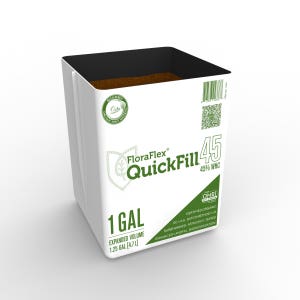California is set to introduce Amsterdam-style cannabis cafes, where patrons can smoke, eat, and drink in a more social setting, thanks to a new bill signed by Governor Gavin Newsom. Assembly Bill 1775, which goes into effect on January 1, 2025, permits cities to allow dispensaries to serve hot food and nonalcoholic beverages, alongside live entertainment, creating a vibrant environment for cannabis users. This move represents a pivotal shift in the legal cannabis landscape and could reshape California’s nightlife. While supporters tout the benefits of boosting legal cannabis businesses and creating social spaces, concerns over the health risks of secondhand smoke persist.
California’s Legal Cannabis Evolution: New Opportunities for Dispensaries
The passing of Assembly Bill 1775 marks a critical moment in the evolution of California’s cannabis industry. As legal dispensaries face tough competition from black-market sellers, the ability to serve food and host live performances provides an opportunity to attract more customers. Cannabis lounges, where smoking and vaping are already permitted, will now become more enticing destinations as patrons can enjoy a broader range of experiences.
By embracing this new model, dispensaries can enhance their offerings and create more immersive environments, similar to Amsterdam’s renowned coffee shops. Assemblymember Matt Haney, who introduced the bill, believes that cannabis cafes will play a crucial role in strengthening California’s legal market and curbing illegal sales. The added convenience of on-site food and beverages will make these cafes a sought-after destination for cannabis enthusiasts, providing an opportunity for dispensaries to generate additional revenue.
The Debate Over Secondhand Smoke and Public Health Concerns
While the new legislation is a win for cannabis enthusiasts and the legal industry, public health groups have voiced concerns about the potential risks associated with secondhand cannabis smoke. The American Cancer Society and other health organizations have been vocal in their opposition, highlighting studies that show marijuana smoke contains higher levels of particulate matter than tobacco smoke. These particulates can lead to respiratory issues, cardiovascular disease, and other health complications, particularly for workers and patrons in enclosed environments.
Jim Knox, managing director for the American Cancer Society Cancer Action Network in California, warned that this law undermines decades of progress in creating smoke-free environments. According to Knox, allowing indoor cannabis smoking is a significant step backward in the state’s efforts to reduce indoor smoking and protect public health. He expressed concerns that, for the first time in 30 years, Californians will be exposed to smoke in a restaurant-like setting.
Ensuring Worker Safety in Cannabis Cafes
To address health concerns, the bill includes several provisions aimed at protecting workers in cannabis cafes. These measures include requirements for ventilation systems to prevent the migration of smoke and odors and the option for workers to wear respirator masks. Employers will also be obligated to include secondhand smoke risks in their injury and illness prevention plans, as required under California labor laws.
However, critics argue that these protections are insufficient. Knox referred to these measures as “window dressing,” stating that there is no effective way to completely prevent smoke from traveling within or outside of a building. Despite advancements in ventilation technology, the reality is that smoke will always have the potential to migrate and pose a risk to nearby patrons and workers.
A Balancing Act: Worker Safety vs. Industry Growth
Governor Newsom, in his signing message, acknowledged the concerns surrounding secondhand smoke but stressed the importance of balancing worker safety with the growth of the cannabis industry. He noted that local governments must take worker safety seriously and that future bills might be needed if health risks escalate. Newsom urged local authorities to prioritize ventilation standards and to monitor the implementation of these new regulations closely to ensure the wellbeing of both patrons and employees.
This balancing act between fostering industry growth and protecting public health will be central to the success of cannabis cafes. If local governments and businesses can effectively implement safety measures, California may see a thriving cannabis lounge scene that enhances its legal cannabis industry while minimizing risks.
Comparing California’s Cannabis Cafes to Amsterdam’s Coffee Shops
California’s move to legalize cannabis cafes draws a strong parallel to Amsterdam’s famous coffee shops, where cannabis consumption has been permitted since the 1970s. Amsterdam’s model has long served as an example of how to create a regulated and socially accepted space for cannabis use. However, there are notable differences between the two models.
In Amsterdam, cannabis consumption is allowed only in specific coffee shops, and these establishments must adhere to strict regulations regarding the sale and use of cannabis. In contrast, California’s bill leaves much of the decision-making power to individual cities. Local governments will determine whether or not to permit cannabis cafes within their jurisdiction, leading to a potentially uneven rollout of these establishments across the state.
Moreover, Amsterdam’s coffee shops do not face the same level of scrutiny over secondhand smoke as California’s cannabis cafes are likely to experience. The cultural acceptance of cannabis in Amsterdam, coupled with less stringent public health regulations around indoor smoking, has made these coffee shops a longstanding part of the city’s social fabric. California’s cannabis cafes, on the other hand, will have to navigate a more complex regulatory landscape, balancing public health concerns with the demand for social consumption spaces.
The Future of Cannabis Cafes in California
As Assembly Bill 1775 takes effect, the future of cannabis cafes in California looks promising but uncertain. While the ability to serve food and drinks will undoubtedly attract more patrons and bolster the legal cannabis industry, the public health debate surrounding secondhand smoke will continue to shape how these cafes operate. Local governments will play a key role in determining the success of this new model by enforcing strict safety standards and addressing the concerns of health advocates.
If executed properly, cannabis cafes have the potential to become a defining feature of California’s cannabis culture. By providing a social space for cannabis users to gather, these cafes could contribute to the normalization of cannabis use and help further integrate it into the mainstream. At the same time, careful attention must be paid to the health and safety of workers and patrons alike.
As the cannabis industry continues to evolve, so too will the regulations and standards governing it. The introduction of cannabis cafes marks an important step in this evolution, offering a glimpse into the future of cannabis consumption in California and beyond.
Paving the Way for a New Cannabis Experience
California’s decision to allow Amsterdam-style cannabis cafes represents a significant shift in how cannabis is consumed socially. With the introduction of Assembly Bill 1775, the state’s cannabis dispensaries will have new opportunities to attract customers by offering a more comfortable and engaging experience. While concerns over secondhand smoke remain a contentious issue, the potential benefits of boosting the legal cannabis industry and creating social spaces for cannabis users are undeniable.
As the bill goes into effect in 2025, the success of California’s cannabis cafes will depend on the ability of local governments and businesses to strike the right balance between industry growth and public health. Should they succeed, these cafes could become a cornerstone of California’s cannabis culture, offering a unique and enjoyable experience for patrons while contributing to the state’s economic and social landscape.





















